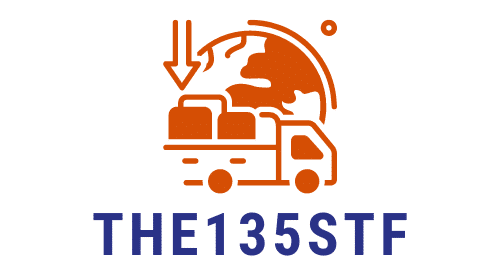In the competitive world of sprint kayaking, athletes often seek effective training methods to enhance their performance. One proven method is dry land training, which involves strength-building exercises outside the water. This article will shed light on the benefits of this approach and guide you on how to incorporate it into your training routine. Using resources such as Google Scholar, PubMed, and CrossRef for research, we’ll delve into various studies related to kayaking, sports performance, and strength training. Our focus will be on exercises that increase force and power, crucial for sprint kayakers.
Understanding Dry Land Training
Dry land training is a form of physical conditioning performed outside the water, typically incorporating resistance and weight exercises. Many swimmers and other aquatic athletes, including sprint kayakers, use it to boost their strength and power. It’s an essential part of their training regimen since it primarily targets the muscle groups used during swimming and paddling.
A lire en complément : How Can Hydrotherapy Be Used for Recovery in Professional Heavyweight Boxers?
According to numerous studies found on PubMed and Google Scholar, dry land training can significantly improve the performance of these athletes. It helps increase their power output, allowing them to paddle faster and more efficiently. For sprint kayakers, it can be the difference between winning and losing a race.
The Role of Strength in Sprint Kayaking
Strength plays a critical role in sprint kayaking. It is the primary factor that determines the initial speed off the starting line and the ability to maintain high speeds throughout the race. A kayaker’s strength originates from their core and upper body, with the power being transferred down to the paddle. This is why exercises focusing on these areas are paramount in a kayaker’s training regimen.
Cela peut vous intéresser : What Is the Role of Muscle Activation Techniques in Preventing Shoulder Injuries in Baseball Catchers?
A study available on CrossRef highlighted the importance of this. It showed that upper body strength, particularly in the muscles used for paddling, directly correlates with the force exerted on the paddle and ultimately, the kayak’s speed. Therefore, incorporating strength exercises into your dry land training is crucial for developing the explosive power needed in sprint kayaking.
Incorporating Bench Press into Dry Land Training
One of the most effective exercises for enhancing upper body strength is the bench press. It targets key muscles used during paddling such as the pectorals, deltoids, and triceps. In addition to these, the bench press also engages your core and leg muscles, making it an excellent full-body exercise.
Multiple studies found on PubMed have demonstrated the benefits of incorporating bench press exercises into a dry land training routine for kayakers. The exercise can increase chest and arm strength, improving the power of each paddle stroke during kayaking. It can also help to improve overall body strength, increasing balance and stability in the kayak.
Optimal Training Regimen for Sprint Kayakers
The optimal dry land training regimen for sprint kayakers should focus on developing explosive strength. This can be achieved through a mix of weightlifting exercises and plyometrics. The goal is to enhance the power of your paddling and bolster your overall endurance.
For instance, focus on exercises like bench press, deadlifts, and squats to build strength. Then, complement these with plyometric exercises such as box jumps and medicine ball throws to develop power.
Ensure to maintain a balance between these exercises to avoid overworking certain muscle groups. Also, remember to incorporate rest days into your regimen for optimal muscle recovery and growth.
Conclusion
Dry land training is a powerful tool for any sprint kayaker looking to boost their performance. It can significantly enhance your upper body strength and power, crucial for paddling. Incorporate exercises like bench press into your dry land training regimen to target key muscles used during kayaking. By doing so, you can increase your paddling force and speed, giving you an edge in competition. Remember, the objective of your training regimen should be to develop explosive strength. This can be achieved through a balance of weightlifting exercises and plyometrics, complemented with adequate rest for muscle recovery.
Bench Pull: A Key Exercise for Sprint Kayakers
The bench pull is another crucial exercise in a sprint kayaker’s dry land training regimen. Like the bench press, it targets the key muscles used during paddling, but with a particular focus on the back and shoulders. According to research available on Google Scholar and CrossRef, the bench pull exercise can significantly enhance a kayaker’s pulling power and overall paddling efficiency.
The bench pull essentially replicates the motion of paddling, making it a sports-specific exercise for kayakers. It involves lying face down on a bench and pulling a barbell or a pair of dumbells up towards the chest. This movement engages the back muscles, particularly the latissimus dorsi, as well as the biceps and forearms.
Studies available on PubMed and CrossRef have demonstrated that incorporating the bench pull into your dry land training can result in substantial improvements in your paddling speed and power. One study published in the Journal of Strength and Conditioning Research found that kayakers who included the bench pull in their training showed a significant increase in their paddling power within just a few weeks.
While the bench pull requires a certain degree of strength, it’s important to start with a manageable weight and gradually increase this as your strength improves. In addition to weight, you should also consider the speed at which you perform this exercise. Sprint kayaking requires both strength and speed, so performing the bench pull quickly can help to develop the explosive power needed in this sport.
The Importance of High-Intensity Interval Training in Dry Land Regimen
Just as endurance is key in sprint kayaking, high-intensity interval training (HIIT) is another pivotal part of a successful dry land training regimen. HIIT involves periods of intense exercise followed by short recovery periods and is known to improve cardiovascular fitness and increase oxygen uptake.
Research available on PubMed and CrossRef demonstrates that HIIT can enhance both aerobic and anaerobic fitness, both of which are crucial for sprint kayaking. Aerobic fitness allows you to maintain a high paddling speed over long distances, while anaerobic fitness enables you to produce the explosive bursts of power required at the start of a race and during key moments.
HIIT exercises suitable for kayakers include cycling sprints, box jumps, and medicine ball throws. These exercises not only improve your fitness but also target the key muscle groups used in kayaking.
While HIIT is highly beneficial, it’s important to remember that this type of training is intense. Therefore, you should always ensure your exercises are performed correctly and safely. In addition, HIIT should be combined with other types of training such as strength training and plyometrics to ensure a well-rounded fitness profile.
Conclusion
In summary, dry land training plays an indispensable role in enhancing the performance of sprint kayakers. By incorporating exercises such as the bench press and bench pull, you can significantly increase your upper body strength, which translates into more powerful and efficient paddling. Additionally, by including high-intensity interval training in your regimen, you can boost both your aerobic and anaerobic fitness, allowing you to maintain high speeds throughout a race and produce explosive bursts of power when needed.
Remember, the ultimate goal of dry land training is to develop explosive strength. This can be achieved through a combination of weightlifting, plyometrics, and high-intensity interval training. However, it’s equally important to remember the role of rest and recovery in your training. By allowing your body time to rest, you give your muscles the opportunity to rebuild and grow stronger, paving the way for improved performance and success in sprint kayaking.






